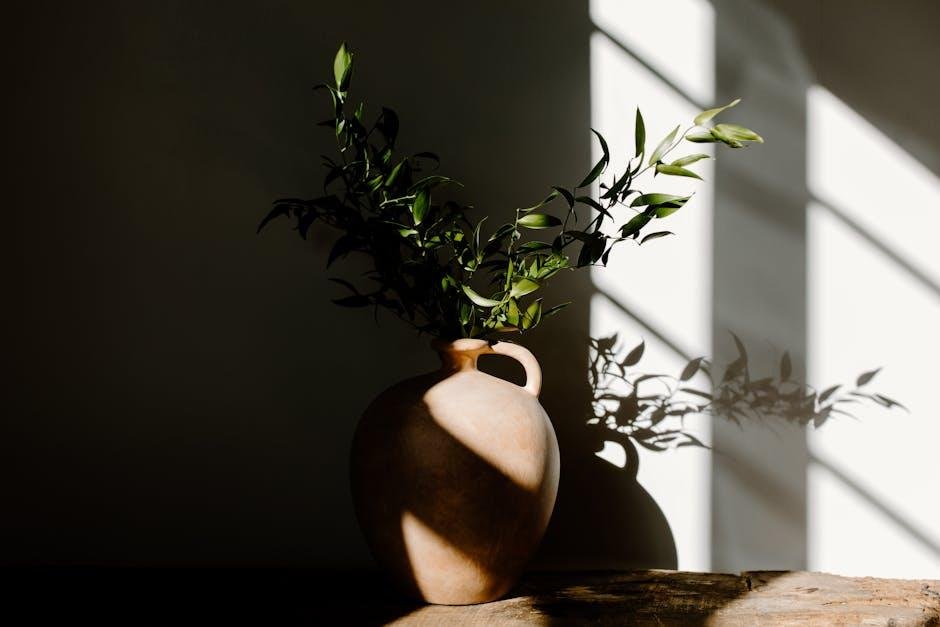In the ever-evolving world of interior design, a new aesthetic has emerged, captivating enthusiasts and homeowners alike wiht its seamless blend of two distinct cultures. The Japandi interior aesthetic, a harmonious fusion of Japanese minimalism and Scandinavian functionality, offers a fresh outlook on how we curate our living spaces. Characterized by earthy palettes, natural materials, and an emphasis on simplicity, Japandi beckons us to embrace both tranquility and warmth within our homes. As we navigate through this article, we will explore the roots of this evolving style, its core principles, and the ways it’s reshaping contemporary interiors, inviting us to find beauty in the balance of form and function.
Embracing Minimalism: The Core Principles of Japandi Design
In the world of interior design, embracing a minimalist ethos is at the heart of Japandi’s charm. This aesthetic seamlessly melds Japanese sophistication with Scandinavian simplicity, creating spaces that speak to both tranquility and functionality. The core principles underlying this design ideology include natural materials, functional furniture, and serene colors. By prioritizing craftsmanship and the beauty found in simplicity, Japandi encourages a lifestyle that values less over more.Elements such as light woods, organic textiles, and handcrafted decor form the backbone of this aesthetic, making every piece purposeful and intentional.
Another essential aspect of this design approach is the emphasis on decluttering. Clean lines and open spaces are pivotal, enabling a flow that fosters a sense of peace and harmony within the home. To achieve this, consider the following key practices:
- Focus on quality over quantity: Invest in fewer, higher-quality items that enhance your space.
- Incorporate nature: Bring the outdoors in with plants and natural light, creating a connection to the environment.
- Opt for neutral palettes: Soft, earthy tones can create a soothing backdrop that is both inviting and calming.
This mindful curation allows for a living experience that celebrates simplicity, elevating the mundane into the extraordinary.

Nature’s Influence: Integrating Organic Elements for a harmonious Space
In the realm of Japandi design, the integration of organic elements plays a vital role in creating a serene and balanced environment. By weaving nature into the fabric of your interior,you cultivate a sense of tranquility that is both visually appealing and emotionally soothing. This aesthetic embraces simplicity,allowing organic materials to shine through. Consider incorporating the following elements:
- Natural Woods: Opt for furniture crafted from light-toned woods, which not only adds warmth but also fosters a connection with nature.
- Earthy Textures: Utilize fabrics like linen and cotton that echo the natural world, bringing an organic touch to your space.
- Indoor Plants: Integrate greenery with strategically placed houseplants that enhance air quality and contribute to a vibrant, lively atmosphere.
Moreover, organic shapes and forms can enhance the aesthetic further, inviting a sense of fluidity into structured spaces.Curved furniture pieces or decor with soft edges can evoke a gentle harmony that contrasts beautifully with the clean lines characteristic of minimalism. To clarify the impact of these elements, consider the following table:
| Element | Effect on Space |
|---|---|
| Natural Woods | Creates warmth and character |
| Earthy Textures | Adds depth and comfort |
| Indoor plants | Increases liveliness and purifies air |

Color Palette and Textures: Cultivating Calm and Balance
the essence of Japandi interior design lies in its exquisite blend of Japanese minimalism and Scandinavian functionality, a harmonious interplay that invites serenity into any space. This aesthetic thrives on a carefully curated color palette that evokes tranquility,characterized by muted tones such as soft grays,earthy browns,and gentle greens. These colors not only create an atmosphere of calm but also enhance the natural light within the rooms, promoting a sense of spaciousness and balance. Key colors include:
- Powder Blue – calming and serene
- Warm Taupe – grounding and earthy
- Olive Green – refreshing and restorative
- Soft White – brightening and clean
Textures play an equally significant role in embodying the Japandi aesthetic. The focus is on natural materials that offer warmth and tactile comfort while promoting a sense of order and simplicity. various textures to consider include:
| Material | Texture Description |
|---|---|
| Wood | Rich grain patterns that add depth and warmth |
| Linen | Soft and breathable, providing a casual elegance |
| Bamboo | Lightweight and durable, evoking a sense of nature |
| Ceramics | Natural finishes that bring artisanal flair |

Practical Tips for Transforming Your Home into a Japandi Oasis
To create a serene Japandi oasis, start with a neutral color palette that promotes tranquility. Select soft whites, muted greens, and earthy tones as your base colors.Incorporate natural materials like wood, rattan, and bamboo to enhance the organic feel of your space. Consider layering textures to create warmth; such as,a plush,neutral area rug over polished wood floors can add depth. Use decor items that emphasize craftsmanship, such as hand-thrown ceramics or artisan textiles, to inject personality without overwhelming the simplicity that defines Japandi.
Furnish your home with minimalist yet functional furniture that echoes both japanese and Scandinavian designs. Look for pieces with clean lines and understated elegance. Incorporate multi-functional furniture, like a low-profile coffee table that also serves as storage, to keep the space uncluttered. Additionally, infuse your home with greenery; potted plants or succulents can breathe life into your space while maintaining the natural aesthetic.create cozy nooks by arranging seating areas with soft cushions and warm throws to encourage relaxation and mindfulness.
To Wrap It Up
As we conclude our exploration of the Japandi interior aesthetic, it becomes evident that this design philosophy is more than just a fleeting trend; it embodies a harmonious blend of simplicity and warmth that resonates with our desire for mindful living.By merging the minimalist principles of Japanese design with the rustic charm of Scandinavian elements, Japandi offers a refreshing approach to home decor that prioritizes both beauty and functionality.In a world frequently enough overwhelmed by excess,this aesthetic invites us to embrace quality over quantity,encouraging a curated selection of pieces that speak to our individual stories. as we continue to seek solace in our living spaces, the warmth and tranquility found in Japandi design remind us of the beauty of balance and the importance of creating a sanctuary within our homes.Weather you’re embarking on a full redesign or simply seeking to incorporate elements of this style into your existing decor, the allure of Japandi lies in its versatility. It encourages us to highlight the simplicity of form, the richness of texture, and the tranquility of color, creating environments that nurture both the mind and the spirit. As we move forward into an ever-evolving design landscape, may the principles of Japandi inspire us to create spaces that reflect not only our aesthetic preferences but also our values and lifestyles.



